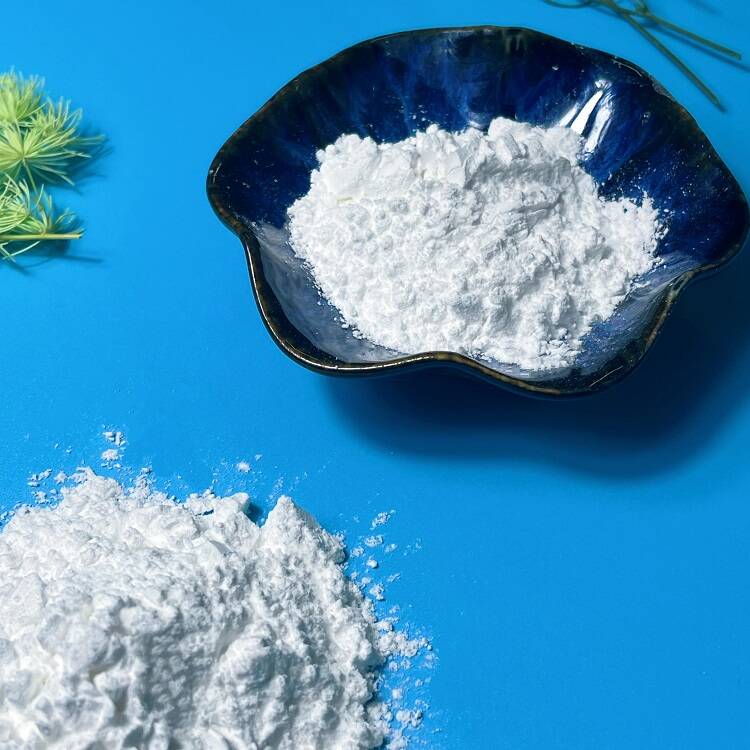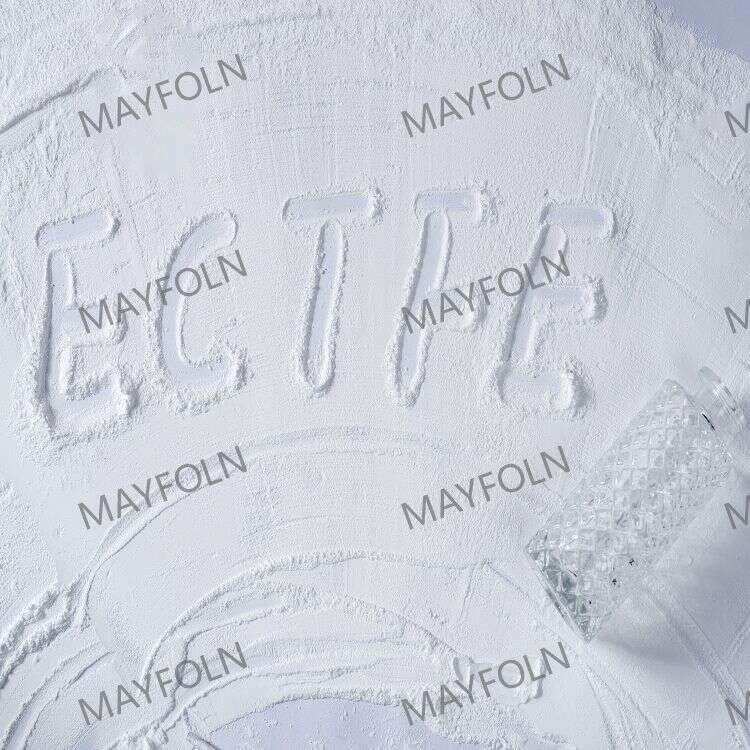The study of different dispersants on improving the dispersion effect of titanium dioxide production process
-
Last Update: 2021-03-16
-
Source: Internet
-
Author: User
Search more information of high quality chemicals, good prices and reliable suppliers, visit
www.echemi.com
0 ForewordIn the production process of titanium dioxide, semi-finished products are usually ground to a qualified granularity before surface treatment can be carried out. In this process, if the titanium dioxide can not be fully dispersed, it will produce reunion, making grinding difficult. The selection of suitable dispersants in actual production can greatly improve the performance of the product. Such as Wang Zehong in hetero-iron ore into 0.8% (accounting for the sample mass score) of sodium hexa-biased phosphate, can improve the content of -0.074 mm in mill products by 30.25 percentage points; Chen Qiang and others studied the application of sodium silicate and sodium hexaphosphate in kaolin, and achieved quite good results. Similarly, the application of sodium silicate and sodium hexaphosphate in the production of titanium dioxide can also bring better results.1 Materials and Methods 1.1 Principle Sodium silicate and sodium hexaphosphate are commonly used dispersants in industrial production and are widely used in mineral processing. They are all inororable dispersants, all of which belong to the anion type. In the process of use, anions adhere to the surface of the mineral, forming hydro-water-dependent particles, which eventually make the slurry suspended and dispersed.1.2 Test samples and properties Samples used in this test were taken from Dorn Titanium Co., Ltd., sample powder 3 kinds, respectively, 3 rotary kilns after calcination by roller grinding products. The sample seals to preserve the spare.samples were taken in small quantities and X-ray fluorescence spectroscopy was performed, the results of which were found in Table 1.As can be seen from Table 1, the three samples contain about the same substances, titanium dioxide accounted for the vast majority, or even reached more than 98%, of which product No. 3 has the highest content of titanium dioxide. Among the other substance content, sample No. 3 had the highest zinc oxide content, and the remaining trace element content was not very different.1.3 Thesodium silicate and sodium hexaphosphate used in this trial are pure analysis. The sodium silicate and sodium hexaphosphate are made into a solution of 100 g/L with deionized water and sealed for backup.1.4 Two dispersants disperse different concentrations of raw materials 1.4.1 natural dispersion effect of raw materials (no dispersants)the three samples are separately disionized water into 600 g/L, 700g/L, 800 g/L aqueous solution groups, stirred in a suitable berration cup. Stir at 2,000 r/min and stir at 20 min. Immediately after stirring, the viscosity is measured with a rotating viscosity meter. Each set of trials is repeated 3 times, and the average is taken as the final test value. The test data are in Table 2.1.4.2 Dispersion effect of sodium silicate on different concentrations of raw materialsthe raw material is made into several groups of solutions according to 1.4.1, the amount of sodium silicate (the ratio of dry weight to the raw material) is 0.5%, mixed and stirred in a suitable beo bowl. The mixing conditions are consistent with 1.4.1, the viscosity is measured immediately after stirring, and the average is averaged 3 times for the final value. The results are in table 3.Table 3 Dispersion effect of sodium silicate on different concentrations of raw materials 1.4.3 Dispersion effect of sodium hexaphosphate on different concentrations of raw materials Repeat the test in 1.4.2 steps, and add the amount of sodium hexaphosphate (the ratio of dry weight of raw materials) to 0.5%. The results are in table 4.Table 4 Dispersion effect of sodium hexaphosphate on different concentrations of raw materials 2 Results and analysisBecause the solution viscosity of the same substance at different concentrations is not the same, in order to facilitate comparison of the introduction of dispersion efficiency (ζ) this physical amount, see (1).(1), ζ is the dispersion efficiency, μ indicates the viscosity of the material when it is made into a concentration, mPa s, and 1 indicates the viscosity of the dispersant added when the material is made into a concentration, mPa s.dispersion efficiency can be compared between different concentrations of solution dispersant effect, than the simple viscosity is much better. 2.1 Sodium silicate dispersion results According to Tables 2 and 3, the viscosity of the same sample increases with the increase in concentration (the same amount of sodium silicate is added), mainly because the increase in concentration makes the particle spacing in the solution system smaller, frequent contact between particles, easy to produce reunions, the formation of large particles, resulting in increased viscosity. Solutions at the same concentration generally have the least viscosity of sample No. 3 and the viscosity of No. 1 is the largest, indicating that sodium silicate has the best dispersion effect on sample No. 3. See table 5 for specific dispersion efficiency. From Table 5, it can be seen that the dispersion effect of sodium silicate is generally the higher the concentration, the better, for the dispersion effect of sample No. 3 is the best, the dispersion efficiency can reach 99%. 2.2 Dispersion results of sodium hexaphosphate Through the comparison of Table 2 to Table 4, it can be seen that the dispersion results of sodium hexaphosphate are much worse than sodium silicate, the viscosity under the same conditions is 4 to 13 times that of sodium silicate, the dispersion effect is not ideal. See table 6 for specific dispersion efficiency. 3 Dispersion the role of the dispersant is to make the solution to disperse the large particle spacing becomes large, so that the viscosity of the entire solution decreased. Sodium silicate and sodium hexaphosphate are commonly used anion dispersants, they ionized in water to form anions, and has a certain amount of surface activity, large particle-like particle surface will have holes or with positive charge (hydrolytic production), so as to be able to absorb anions. Large particle surface adsorption dispersants form a double electron layer, anions are closely adsorbed by the particle surface (see Figure 1), known as surface ions. Ions with opposite charges in a medium are called antiions. They are absorbed by surface ions by electrostation, and a portion of the antiions is tightly bound to particles and surface ions, which are called bound antiions. They form a moving whole with a medium, with a negative charge, and another part of the anti-ion is surrounded by what is called a free anti-ion, forming a diffusion layer. This creates a double layer between the surface ions and the antiions. In the process of medium motion, the particles and particles, double-electric layer and double-electric layer due to the same charge, will produce static rejection, making it difficult for large particles to contact each other or even reunite into larger particles. Sodium silicate belongs to the strong alkali weak acid, strong hydrolytic in water, the water solution is alkaline. Hydrolysals are as follows: of anions in the air, which are heavily adsorbed on the surface of large particles to prevent them from forming polymers and dispersing them. Sodium hexaphosphate also belongs to the strong alkali weak acid, which is the basic mechanism unit in the aqueous solution is PO3-, they can be connected to each other polymerized into a helix-shaped long chain, can adsorb on the surface of the particles to enhance the hydrophobicity of the particles, and significantly improve the negative potentity of the particle surface, so that the double layer is more stable, the dispersion effect is better. Its hydrolytic reaction in water is: 4 conclusion through this test can get the following conclusions: (1) sodium silicate and sodium hexaphosphate on titanium dioxide raw materials have different degrees of dispersion, and the dispersion of sodium silicate is better. (2) The dispersion of sodium silicate and sodium hexaphosphate is caused by the adsorption of hydrolysed anions on the surface of the particles, so that the dispersion effect can be improved selectively to improve the hydrolytic degree of the dispersant.
This article is an English version of an article which is originally in the Chinese language on echemi.com and is provided for information purposes only.
This website makes no representation or warranty of any kind, either expressed or implied, as to the accuracy, completeness ownership or reliability of
the article or any translations thereof. If you have any concerns or complaints relating to the article, please send an email, providing a detailed
description of the concern or complaint, to
service@echemi.com. A staff member will contact you within 5 working days. Once verified, infringing content
will be removed immediately.






